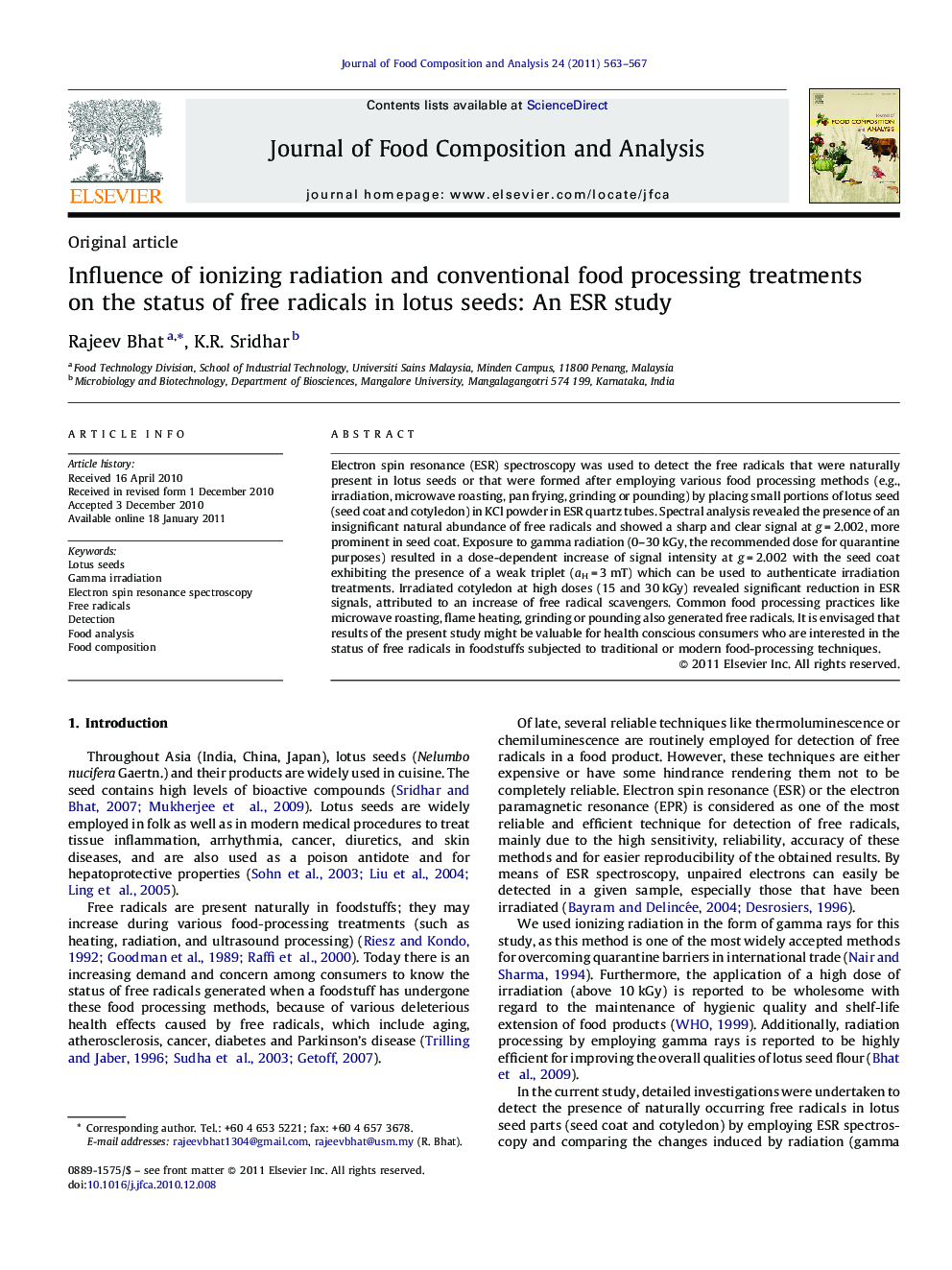| Article ID | Journal | Published Year | Pages | File Type |
|---|---|---|---|---|
| 7620915 | Journal of Food Composition and Analysis | 2011 | 5 Pages |
Abstract
Electron spin resonance (ESR) spectroscopy was used to detect the free radicals that were naturally present in lotus seeds or that were formed after employing various food processing methods (e.g., irradiation, microwave roasting, pan frying, grinding or pounding) by placing small portions of lotus seed (seed coat and cotyledon) in KCl powder in ESR quartz tubes. Spectral analysis revealed the presence of an insignificant natural abundance of free radicals and showed a sharp and clear signal at g = 2.002, more prominent in seed coat. Exposure to gamma radiation (0-30 kGy, the recommended dose for quarantine purposes) resulted in a dose-dependent increase of signal intensity at g = 2.002 with the seed coat exhibiting the presence of a weak triplet (aH = 3 mT) which can be used to authenticate irradiation treatments. Irradiated cotyledon at high doses (15 and 30 kGy) revealed significant reduction in ESR signals, attributed to an increase of free radical scavengers. Common food processing practices like microwave roasting, flame heating, grinding or pounding also generated free radicals. It is envisaged that results of the present study might be valuable for health conscious consumers who are interested in the status of free radicals in foodstuffs subjected to traditional or modern food-processing techniques.
Keywords
Related Topics
Physical Sciences and Engineering
Chemistry
Analytical Chemistry
Authors
Rajeev Bhat, K.R. Sridhar,
